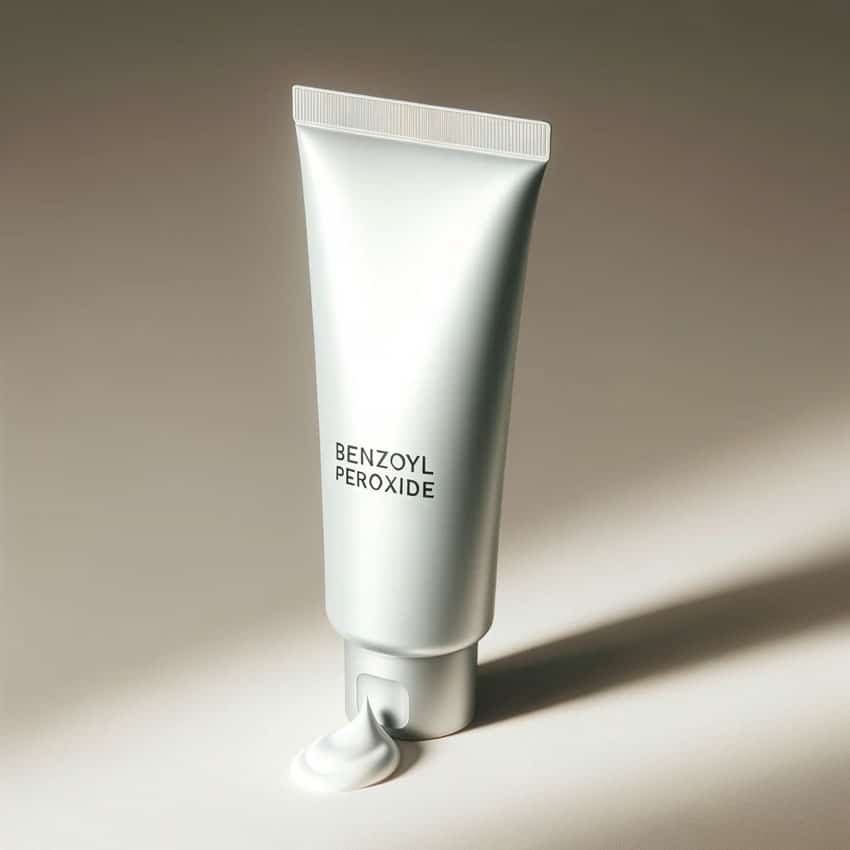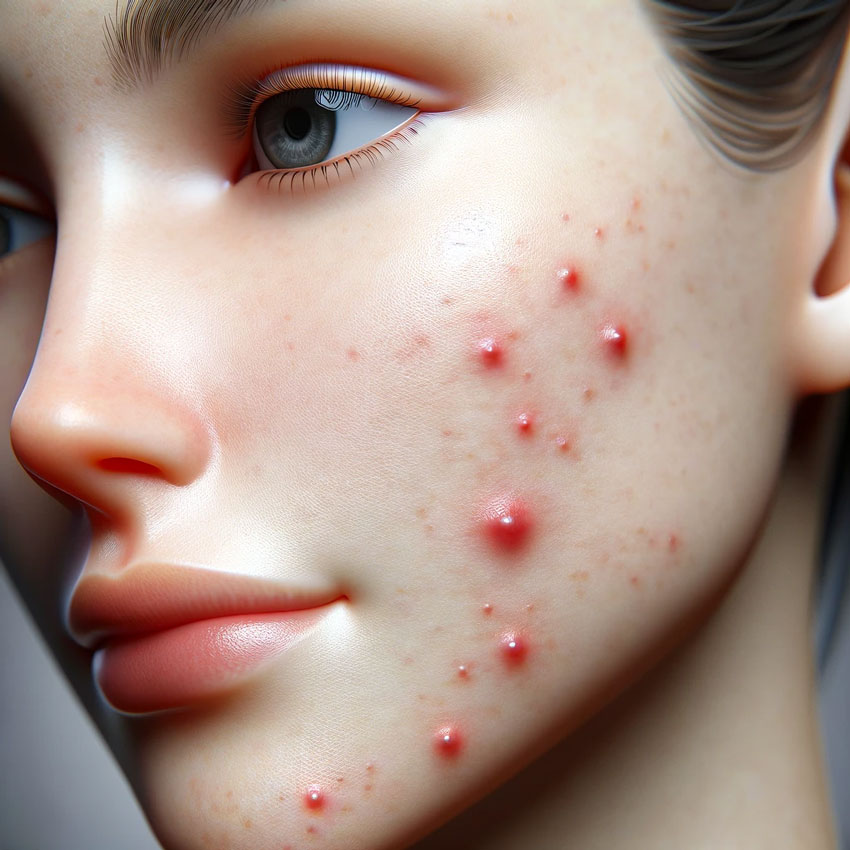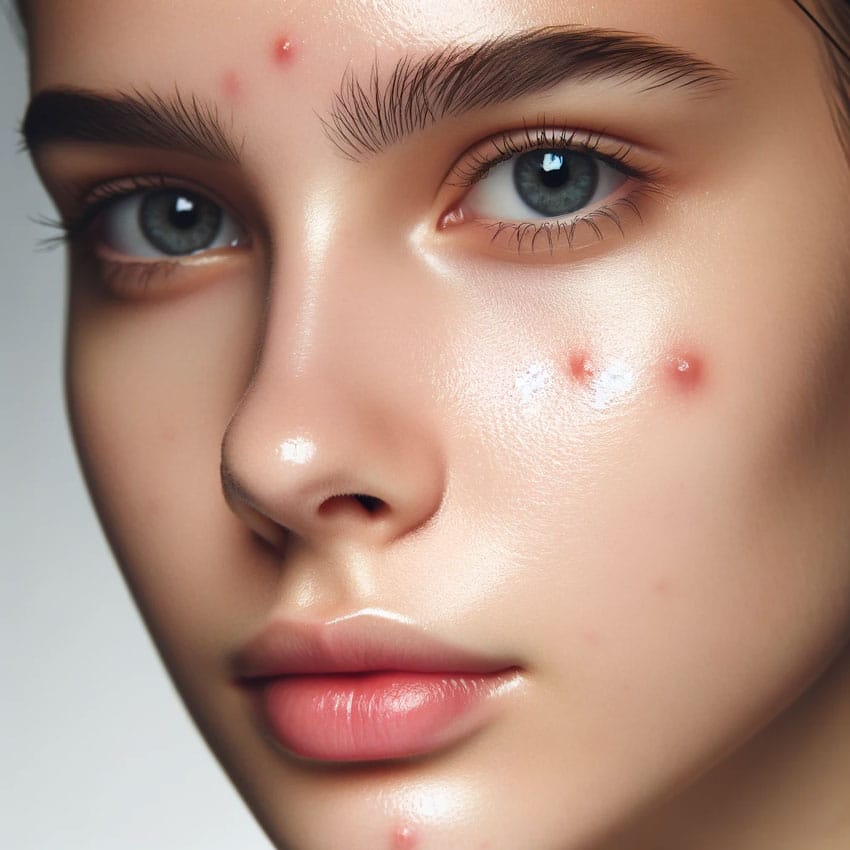Panoxyl is a topical acne treatment product that contains benzoyl peroxide, which is known for its antibacterial and anti-inflammatory properties.
While it is primarily used to treat active acne breakouts, many people wonder if it can also help with acne scars.
Acne scars can be frustrating and can affect one’s self-esteem. Unfortunately, there is no overnight treatment to make them magically disappear.
So, the question remains: Does Panoxyl help with acne scars?
What is Panoxyl

Panoxyl is a topical acne treatment that contains benzoyl peroxide as its active ingredient. Benzoyl peroxide is a powerful ingredient that can help reduce the amount of bacteria on the skin and clear up existing blemishes. It is also effective in preventing new acne breakouts from forming.
Panoxyl comes in different forms such as creams, lotions, foaming wash, and soap-free bars. The strength of the product ranges from 4% to 10%. The product is available over-the-counter and does not require a prescription.
Aside from benzoyl peroxide, Panoxyl also contains cetearyl alcohol, glycerin, propylene glycol, and water. Depending on the type of product, it may also contain other ingredients such as preservatives or fragrances.
Panoxyl is manufactured by Stiefel Laboratories, a subsidiary of GlaxoSmithKline. It is marketed as an effective acne treatment that can help improve the appearance of acne-prone skin.
Understanding Acne Scars

Acne scars are the result of inflamed blemishes caused by clogged pores. When the skin’s pores become blocked with excess oil, bacteria, and dead skin cells, the pore swells and breaks the follicle wall.
In response, the body sends white blood cells to the area to fight the infection, leading to inflammation. This inflammation can cause damage to the surrounding tissue, resulting in the formation of scars.
Acne scars can come in different forms, including:
- Ice pick scars: These are deep, narrow scars that extend into the skin’s deeper layers, giving the skin the appearance of being punctured by an ice pick.
- Boxcar scars: These are round or oval depressions with steep vertical sides and a flat base.
- Rolling scars: These are broad depressions with rounded edges, giving the skin a wave-like appearance.
Acne scars can be challenging to treat, and there is no single treatment that works for everyone. However, there are several treatments available that can help reduce the appearance of acne scars, including the use of topical treatments such as Panoxyl.
Panoxyl contains benzoyl peroxide, which is a potent acne-fighting ingredient that helps to kill the bacteria that cause acne. It also has anti-inflammatory properties that can help reduce redness and swelling associated with acne scars.
Additionally, some Panoxyl products contain salicylic acid, which can help exfoliate the skin and unclog pores, reducing the appearance of acne scars.
While Panoxyl can be effective in reducing the appearance of acne scars, it is essential to note that it may take several weeks or months of consistent use to see significant results.
It is also crucial to follow the instructions carefully and use the product as directed to avoid any potential side effects or irritation.
Panoxyl’s Role in Acne Treatment

Panoxyl is a brand of acne treatment products that contains benzoyl peroxide, a topical medication that is effective in treating mild to moderate acne. Benzoyl peroxide works by killing the bacteria that cause acne, reducing inflammation, and unclogging pores.
Panoxyl’s range of products includes creams, lotions, foaming wash, and soap-free bars. These products come in different strengths, including 4%, 8%, and 10% benzoyl peroxide. The higher the strength, the more potent the medication, but also the more likely it is to cause skin irritation.
Panoxyl’s targeted approach ensures that each type of acne is addressed, providing quick and noticeable results. It is especially effective in treating inflammatory acne, such as papules and pustules.
When using Panoxyl, it is important to follow the instructions carefully. Benzoyl peroxide can cause dryness, peeling, and redness, especially during the first few weeks of treatment.
It is recommended to start with a lower-strength product and gradually increase it as tolerated.
While Panoxyl can help improve the appearance of acne scars by reducing inflammation and preventing new breakouts, it is not specifically designed to treat acne scars. For severe scarring, other treatments such as chemical peels, microdermabrasion, or laser therapy may be necessary.
Effectiveness of Panoxyl on Acne Scars
Panoxyl is a topical cream that is commonly used to treat acne. It contains benzoyl peroxide, which is an FDA-approved ingredient to treat acne by killing the bacteria that contribute to acne. However, many people also use Panoxyl to reduce the appearance of acne scars.
According to some studies, Panoxyl can help to improve the appearance of acne scars by reducing inflammation and promoting exfoliation.
Inflammation is a key component in the development of acne scars, and Panoxyl has anti-inflammatory properties that help to reduce redness and swelling.
Panoxyl also contains salicylic acid, which helps to exfoliate and unclog pores. This can help to reduce the appearance of acne scars by removing dead skin cells and promoting the growth of new, healthy skin cells.
However, it is important to note that the effectiveness of Panoxyl on acne scars may vary from person to person. Some people may see significant improvement in the appearance of their acne scars after using Panoxyl, while others may not see much of a difference.
In addition, it is important to use Panoxyl as directed and to be patient when using it to treat acne scars. It may take several weeks or even months to see significant improvement in the appearance of acne scars.
Alternative Treatments for Acne Scars

While PanOxyl can be effective in preventing and treating acne, it may not be as effective in treating acne scars. Fortunately, there are other treatments available that can help improve the appearance of acne scars.
One option is laser resurfacing, which uses a laser to remove the top layer of skin and promote the growth of new, healthy skin. This can help reduce the appearance of scars and improve skin texture. However, it can be expensive and may require multiple sessions.
Another option is chemical peels, which involve applying a chemical solution to the skin to remove the top layer of damaged skin cells. This can help reduce the appearance of scars and improve skin texture. However, it can also be expensive and may require multiple sessions.
Microdermabrasion is a non-invasive treatment that involves using a special tool to remove the top layer of skin and promote the growth of new, healthy skin. This can help reduce the appearance of scars and improve skin texture. However, it may not be as effective for deeper scars.
Dermabrasion is a more invasive treatment that involves using a special tool to remove the top layer of skin and promote the growth of new, healthy skin. This can help reduce the appearance of scars and improve skin texture. However, it can be painful and may require a longer recovery time.
Injections of corticosteroids can also be used to reduce the appearance of raised scars. This treatment involves injecting a corticosteroid directly into the scar tissue to help reduce inflammation and promote healing. However, it may not be as effective for other types of scars.
Conclusion
Panoxyl has active ingredients that can help reduce the appearance of acne scars. Benzoyl peroxide helps to reduce inflammation, while glycerin soothes and hydrates the skin. Salicylic acid helps to exfoliate and unclog pores, which can help reduce the appearance of acne scars.
However, it is important to note that results may vary from person to person, and it may take several weeks or months to see results.
Additionally, it is important to use Panoxyl as directed and to not exceed the recommended dosage.
Panoxyl can also help prevent new breakouts that could potentially lead to more acne scars. Targeting the underlying causes of acne promotes exfoliation and allows new, healthier skin to emerge and replace the scarred tissue.

